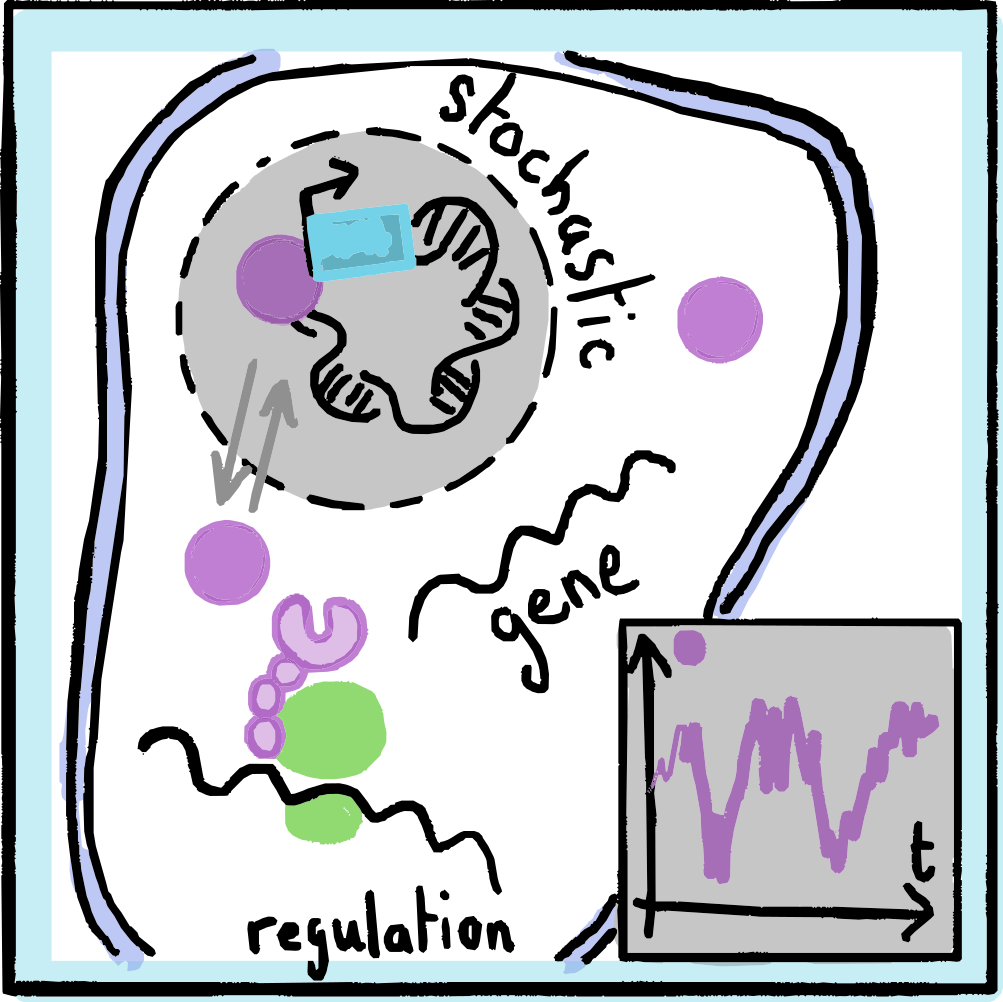stochastic regulatory systems
Fundamentally, cells are stochastic biological systems—involving dynamics that are inherently random and non-deterministic. Heterogeneity arises in cells simply as a result of molecular and environmental variations—manifested in broad distributions of proteins, mRNAs and other gene products across genetically identical cells. Although cells have evolved to minimize the effects of noise in their control mechanisms, randomness has also been shown to provide novel useful features not possible under a deterministic biological narrative.
Many of the consequences of randomness in biology are not well understood, even in the simplest cases. The $R^3$ Lab takes a combined analytic and computational approach to understanding the non-intuitive nature of cellular randomness, taking interest in the distributions of mRNAs, proteins and genetic regulation. We often challenge the steady state narrative used to explain cellular behaviors, and we take most interest in the qualitative, rather than quantitative features, of mathematical biological modeling.
The $R^3$ Lab is currently researching several questions on the role of stochasticity in gene regulation:
- What phenomena are possible under stochastic dynamics that are not present under deterministic dynamics?
- How do regulatory networks function in the presence of environmental and molecular noise?
- Do transient stochastic dynamics offer novel mechanisms of cellular function that are not possible in “biological steady states”?

Research from the $R^3$ Lab on the role of stochasticity in gene regulation:
- Holehouse, J. (2025). Quantifying Broken Detailed Balance in Transcription. arXiv preprint arXiv:2405.12897.
- Holehouse, J. (2025). Do Distinct Subpopulations Signify Modes of Behavior in a Noisy Single Cell? bioRxiv, 2025-07.
- Pandya A., Holehouse, J. (2025). Transcriptional noise can tune the correlations between stages in the mRNA lifetime. Working paper.
- Holehouse, J., Sukys, A., Kumar, A., Öcal, K. (2025). Phase transition into noise-driven transient bimodality. Working paper.